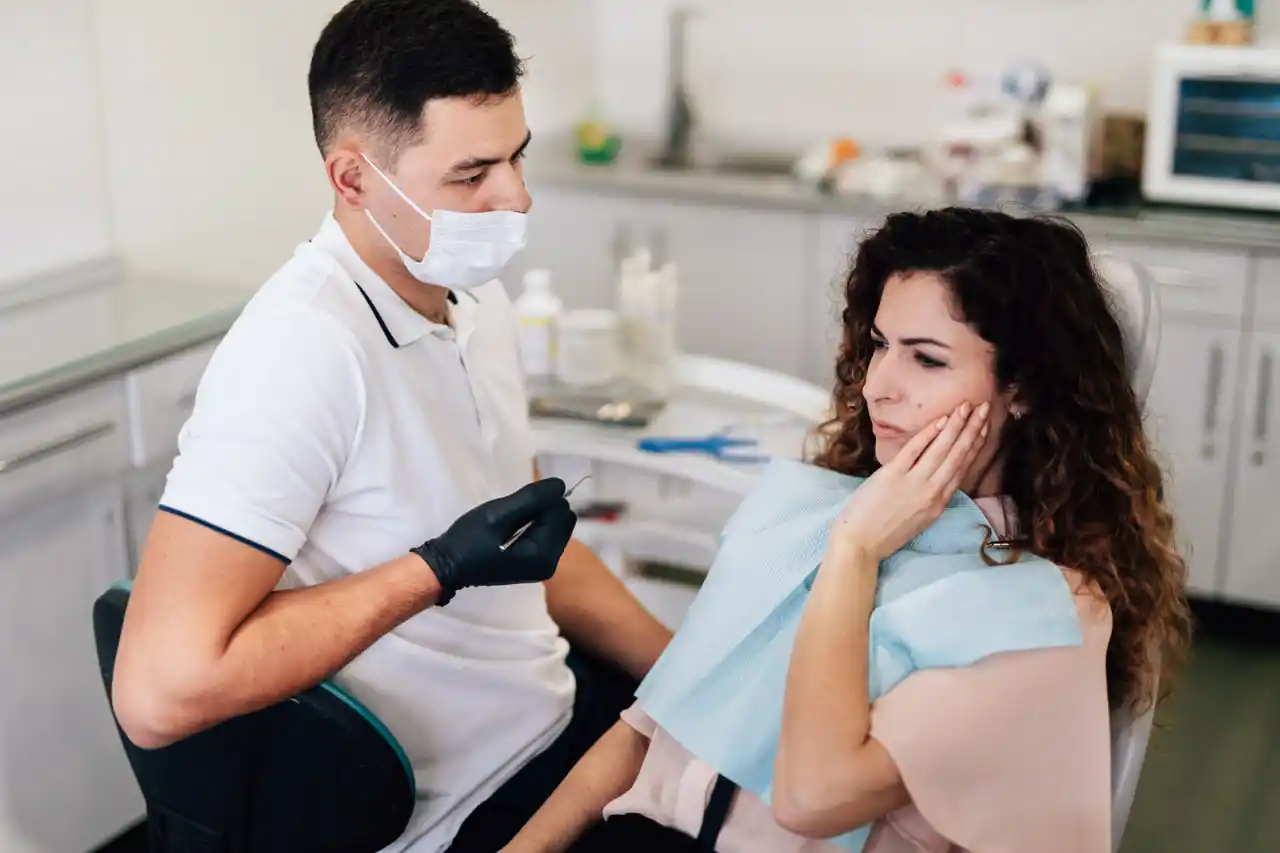Are you tired of looking at your teeth in the mirror and noticing unsightly stains? Teeth’s staining is a common issue that affects many people and can be caused by a variety of factors. In this article, we’ll delve into the causes of teeth staining and explore effective prevention and treatment options to help you restore your pearly whites’ natural brilliance.
Introduction
A radiant and self-assured smile can have a substantial effect on both your self-confidence and your overall look. However, the presence of teeth stains can diminish that confidence and leave you feeling self-conscious. Let’s explore the common culprits behind teeth staining and how you can regain your smile’s radiance.
Understanding Teeth Staining
Teeth staining, also known as tooth discoloration, occurs when the outer layer of the tooth (enamel) or the inner layer (dentin) becomes discolored or stained. This can lead to yellow, brown, or even grayish hues on the teeth, affecting both their aesthetic and health.
Common Causes of Teeth Staining
Food and Drinks
Certain foods and beverages, such as coffee, tea, red wine, berries, and dark sauces, contain pigments that can cling to the tooth’s surface, causing staining over time.
Tobacco Use
Tobacco, whether smoked or chewed, contains chemicals that can penetrate the enamel, leading to deep-seated stains that are challenging to remove.
Poor Dental Hygiene
Inadequate brushing and flossing can allow plaque and tartar buildup, which not only contribute to staining but also compromise overall oral health.
Age-related Stains
As we age, the enamel naturally wears down, revealing the yellowish dentin underneath. This can lead to an inevitable darkening of the teeth.
Medical Conditions and Medications
Certain medical conditions and medications, such as tetracycline antibiotics, can cause intrinsic stains that originate from within the tooth and are difficult to eliminate.
Prevention of Teeth Staining
Brush and Floss Regularly
Maintaining good oral hygiene is the first line of defense against teeth staining. Brush your teeth at least twice a day and floss once daily to remove plaque buildup.
Rinse Your Mouth after Consuming Stain-Causing Foods
If you can’t resist that morning cup of coffee or a glass of red wine, rinse your mouth with water immediately afterward to minimize the staining effects.
Use a Straw for Certain Beverages
Using a straw for beverages that can cause staining helps direct the liquid past your front teeth, reducing the contact that leads to discoloration.
Quit Smoking or Chewing Tobacco
By quitting tobacco use, you not only protect your overall health but also prevent deep stains from forming on your teeth.
Choose Teeth-Friendly Foods
Add crisp fruits and vegetables such as apples, carrots, and celery to your daily meals. Their natural abrasiveness can help remove surface stains.
Regular Dental Cleanings
Professional dental cleanings can effectively remove surface stains and plaque buildup, keeping your smile bright and healthy.
At-Home Remedies for Teeth Whitening
Baking Soda and Hydrogen Peroxide Paste
Creating a paste from baking soda and hydrogen peroxide and brushing your teeth with it occasionally can help lighten stains.
Oil Pulling
Oil pulling involves swishing coconut oil in your mouth to reduce bacteria and improve overall oral hygiene, which can contribute to a brighter smile.
Apple Cider Vinegar Rinse
While acidic, using a diluted apple cider vinegar rinse occasionally can help remove stains. However, use this method cautiously to avoid enamel erosion.
Activated Charcoal
Activated charcoal, applied as a paste or used in toothpaste, can absorb stains and toxins, helping to brighten teeth.
Over-the-Counter Whitening Products
There are numerous whitening toothpaste, strips, and gels available over the counter that can help reduce mild stains.
Professional Treatments
Professional Teeth Whitening
Professional teeth whitening treatments administered by dentists can yield rapid and dramatic results, often involving the use of peroxide-based bleaching agents.
Dental Veneers
Veneers are thin shells placed over the front surface of teeth to hide discoloration and improve overall appearance.
Crowns and Bonding
For severe stains that are resistant to other treatments, dental crowns and bonding can provide long-lasting solutions.
Maintaining Whitened Teeth
Oral Hygiene
After undergoing teeth whitening treatments, maintaining proper oral hygiene is crucial to prevent new stains from forming.
Dietary Habits
Continue to be mindful of your food and drink choices, as some habits that caused staining initially could lead to recurrence.
The Psychological Impact of Teeth Staining
Teeth staining can have a profound psychological impact, affecting self-confidence and even leading to social and emotional challenges. However, by addressing the issue, you can regain not only your smile but also your self-assurance.
Conclusion
In the quest for a radiant smile, understanding the causes of teeth staining is vital. From practicing good oral hygiene and making smart dietary choices to exploring professional treatments, you have various options to maintain or restore your teeth’s natural whiteness. By taking steps to prevent and treat teeth staining, you’re investing in both your oral health and your confidence.
FAQs
Can teeth staining be completely prevented?
While complete prevention might be challenging, adopting good oral hygiene practices and avoiding stain-causing substances can significantly reduce the likelihood of staining.
How long do professional teeth whitening results last?
The longevity of professional teeth whitening results varies based on individual habits and maintenance, but they can last from several months to a few years.
Are home remedies as effective as professional treatments?
Home remedies can help with mild staining, but for more noticeable results, professional treatments are generally more effective.
Can I whiten my teeth if I have dental restorations?
Teeth whitening treatments do not work on dental restorations like crowns or veneers. It’s essential to discuss your options with a dentist.
Is teeth whitening safe for everyone?
Teeth whitening is generally safe, but it’s advisable to consult a dentist before undergoing any treatment, especially if you have existing dental conditions.





